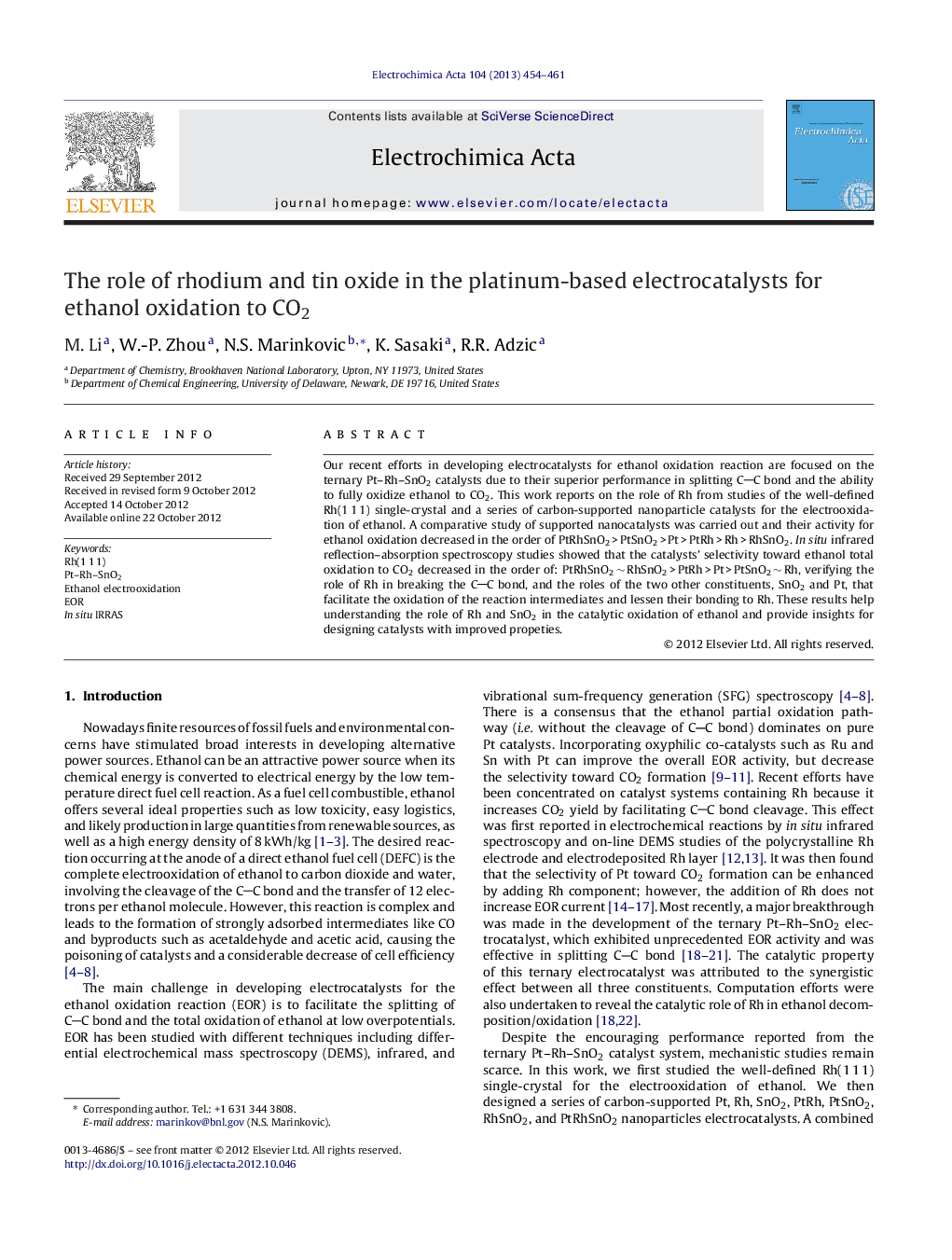| Article ID | Journal | Published Year | Pages | File Type |
|---|---|---|---|---|
| 6617938 | Electrochimica Acta | 2013 | 8 Pages |
Abstract
Our recent efforts in developing electrocatalysts for ethanol oxidation reaction are focused on the ternary Pt-Rh-SnO2 catalysts due to their superior performance in splitting CC bond and the ability to fully oxidize ethanol to CO2. This work reports on the role of Rh from studies of the well-defined Rh(1 1 1) single-crystal and a series of carbon-supported nanoparticle catalysts for the electrooxidation of ethanol. A comparative study of supported nanocatalysts was carried out and their activity for ethanol oxidation decreased in the order of PtRhSnO2 > PtSnO2 > Pt > PtRh > Rh > RhSnO2. In situ infrared reflection-absorption spectroscopy studies showed that the catalysts' selectivity toward ethanol total oxidation to CO2 decreased in the order of: PtRhSnO2 â¼Â RhSnO2 > PtRh > Pt > PtSnO2 â¼Â Rh, verifying the role of Rh in breaking the CC bond, and the roles of the two other constituents, SnO2 and Pt, that facilitate the oxidation of the reaction intermediates and lessen their bonding to Rh. These results help understanding the role of Rh and SnO2 in the catalytic oxidation of ethanol and provide insights for designing catalysts with improved propeties.
Keywords
Related Topics
Physical Sciences and Engineering
Chemical Engineering
Chemical Engineering (General)
Authors
M. Li, W.-P. Zhou, N.S. Marinkovic, K. Sasaki, R.R. Adzic,
